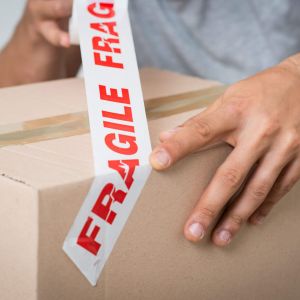When you're preparing your goods for shipment, it's easy to feel overwhelmed by the sheer number of freight shipping terms you need to understand before your shipment hits the road - and that includes freight classifications. Freight class is one of the most common - and most confusing - freight shipping terms you'll encounter. So, what exactly is freight shipping class?
In the United States, each commodity or type of product is assigned a National Motor Freight Classification (NMFC). Freight shipping classes are defined by the National Motor Freight Traffic Association (NMFTA), and establish a standardized system designed to provide consumers (both residential and commercial) with a uniform pricing structure when transporting freight.
Freight shipping class is determined by four factors:
- Density
- Stowability
- Handling
- Liability
Let’s take a closer look at each of these factors.
1. Density
Density describes the space your cargo occupies in relation to its weight. It’s calculated by dividing the weight of the item in pounds by its volume in cubic feet. Unless there are any major concerns with stowability, handling, or liability, density is the most significant factor when assigning a freight class.
How to calculate density:
L x W x H = inches3
inches3 / 1,728 = feet3
feet3 x weight in lbs = freight density |
2. Stowability
Stowability quantifies the ease or difficulty of loading and carrying your cargo onto and off of the truck.
Most freight is easily stowable in trucks, trains, and boats, but some cargo is regulated by government or carrier policies that will make stowability more difficult. For example:
- Some items cannot be stowed together.
- Hazardous materials must be transported according to specific safety policies and regulations.
- Excessive weight, length, or oddly shaped protrusions may make it impossible to load your cargo with other freight.
- Some freight can’t bear an additional load, and therefore can’t be stacked.
3. Handling
Freight is often loaded using mechanical equipment. Most freight poses no difficulties, but some cargo requires special attention because of its weight, shape, fragility, or other safety hazards.
4. Liability
Liability measures the probability of freight theft or damage, as well as the likelihood of damage due to adjacent freight. Perishable cargo, or cargo that is prone to spontaneous combustion or explosion, is classified according to liability and assigned a value per pound.
Freight Shipping Classification Chart (lowest cost to highest cost)
There are 18 freight classifications. Use this chart to help determine your freight shipping class:
Cost |
Class Name |
Examples |
Weight Range per Cubic Foot |
|
Lowest cost |
50 - Clean Freight |
Cargo that fits onto a standard, shrink-wrapped 4x4 foot palette; very durable |
Over 50lbs |
|
|
55 |
Bricks, cement, hardwood flooring |
35-50lbs |
|
|
60 |
Car accessories and car parts |
30-35lbs |
|
|
65 |
Car accessories and parts, bottled beverages, books in boxes |
22.5-30lbs |
|
|
70 |
Car accessories and parts, food items, automobile engines |
15-22.5lbs |
|
|
77.5 |
Tires, bathroom fixtures |
13.5-15lbs |
|
|
85 |
Crated machinery, cast-iron stoves |
12-13.5lbs |
|
|
92.5 |
Computers, monitors, refrigerators |
10.5-12lbs |
|
|
100 |
Boat covers, car covers, canvas, wine cases |
9-10.5lbs |
|
|
110 |
Cabinets, framed artwork, table saw |
8-9lbs |
|
|
125 |
Small household appliances |
7-8lbs |
|
|
150 |
Auto sheet metal parts, empty bookcases |
6-7lbs |
|
|
175 |
Clothing, couches and other stuffed furniture |
5-6lbs
|
|
|
200 |
Auto sheet metal parts, aircraft parts, packaged mattresses |
4-5lbs |
|
|
250 |
Bamboo furniture, mattress and box spring, plasma TVs |
3-4lbs |
|
|
300 |
Wood cabinets, tables, chairs |
2-3lbs |
|
|
400 |
Deer antlers |
1-2lbs |
|
Highest cost |
500 |
Bags of gold dust, ping pong balls |
Less than 1lb |




